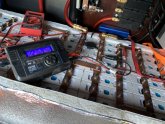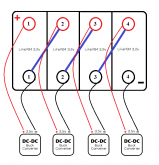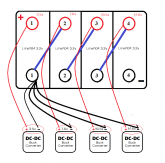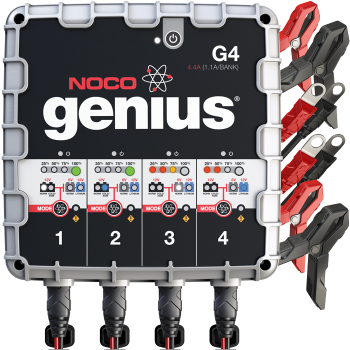Hi,
Have this thought going please suggest your opinion.
Do you think Individually recharging Lifepo4 prismatic cells using separate small chargers could work?
This could give a tighter control on charge parameters without the need for a specialized BMS???
Since Potential difference between each subsequent link is same, so in theory if 3.65 V be applied
on cell terminals individually it should charge the whole pack.
What do you say? Has anyone tried it already?
Regards
Have this thought going please suggest your opinion.
Do you think Individually recharging Lifepo4 prismatic cells using separate small chargers could work?
This could give a tighter control on charge parameters without the need for a specialized BMS???
Since Potential difference between each subsequent link is same, so in theory if 3.65 V be applied
on cell terminals individually it should charge the whole pack.
What do you say? Has anyone tried it already?
Regards








